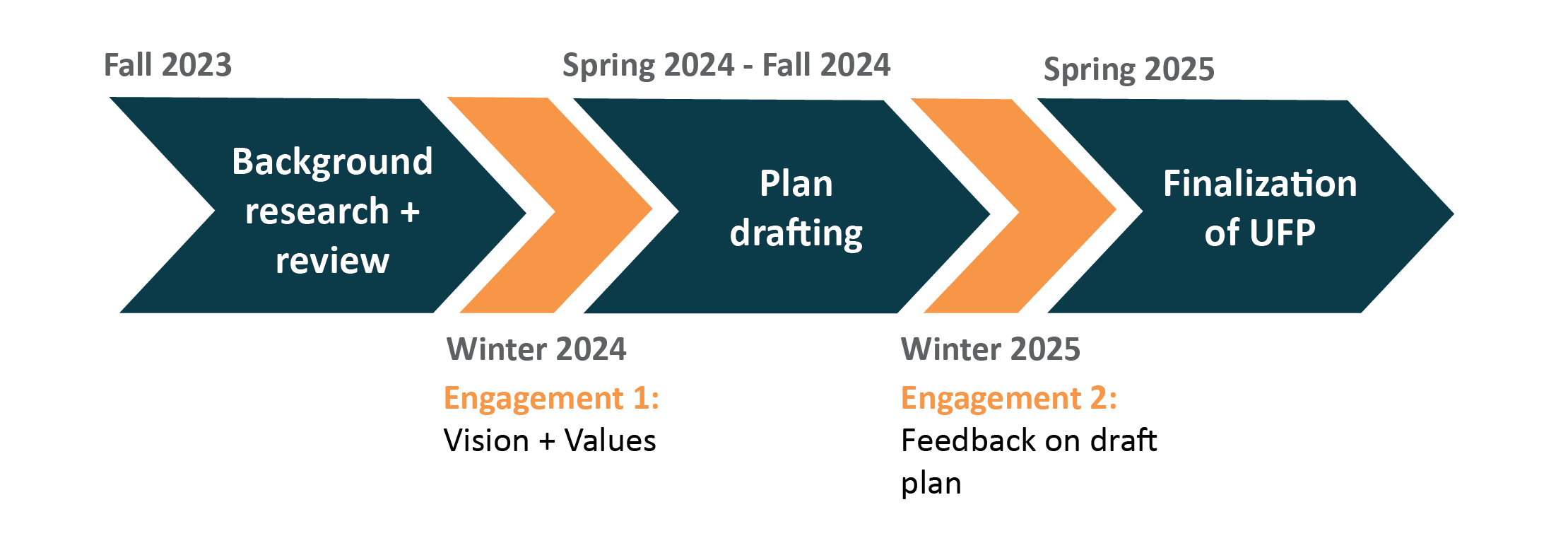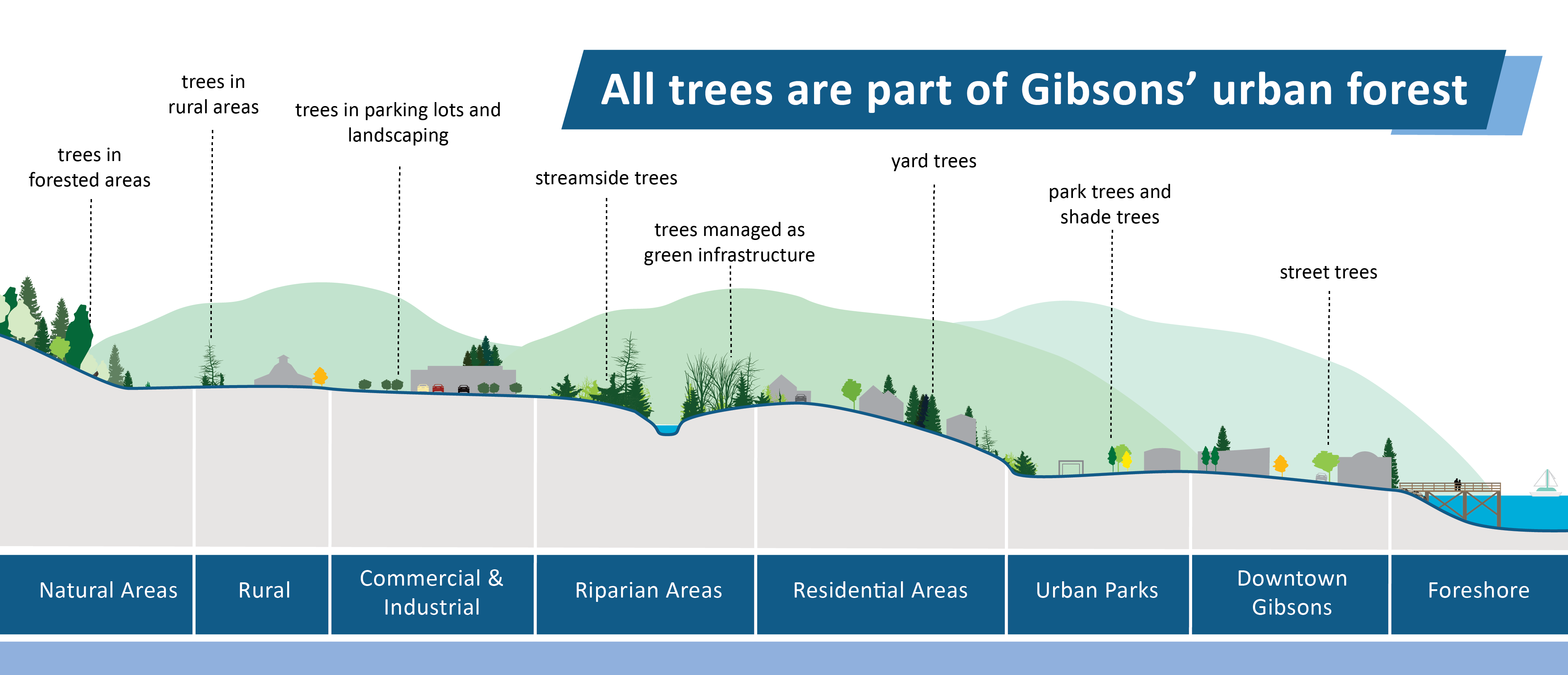Help Shape Gibsons’ Urban Forest!
We are developing Gibsons’ first Urban Forest Plan (UFP) to protect and enhance our town’s tree canopy. Your input will help shape the final plan, ensuring it reflects the community’s vision.
Phase 2 of Community Engagement is now closed.
View the draft Urban Forest Plan
Project timeline:
The development of the UFP is occurring over several phases, including two phases of public engagement.
What is an Urban Forest?
According to the Canadian Council of Ministers of the Environment (CCME):
“Urban forests include all trees growing along streets, in parks, backyards, and natural green spaces within a town or city. They form ecosystems that provide vital environmental and social benefits.”
Key Benefits of Urban Forests
- Stormwater Management: Absorbs rainfall & prevents erosion
- Water Purification: Filters pollutants before reaching groundwater
- Carbon Sequestration: Absorbs CO₂ & combats climate change
- Improved Air Quality: Removes airborne pollutants
- Noise Reduction: Buffers traffic & construction noise
- Health & Well-being: Encourages outdoor activity & improves mental health
- Wildlife Habitat: Provides shelter for birds & pollinators
- Economic Value: Enhances property values & community appeal
The Town of Gibsons’ urban forest is comprised of a mixture of native and non-native trees growing in natural and constructed environments. A healthy urban forest is part of the Town’s approach to climate change adaptation and mitigation. Trees and forest ecosystems regulate air temperature, sequester carbon, and return water to the soil, buffering our community from impacts like high temperatures and heavy rainfall. Furthermore, trees provide direct benefits to human health and well-being and enhance the liveability of neighbourhoods.
The Urban Forest Plan will guide the Town in responding to a wide range of challenges facing the urban forest, such as development, climate change, invasive species, and more. Implementation of the plan will help to grow the Town’s tree canopy and ensure that the environmental, economic, and social benefits that trees provide are protected for years to come.
Links
View the presentation from the open house:


